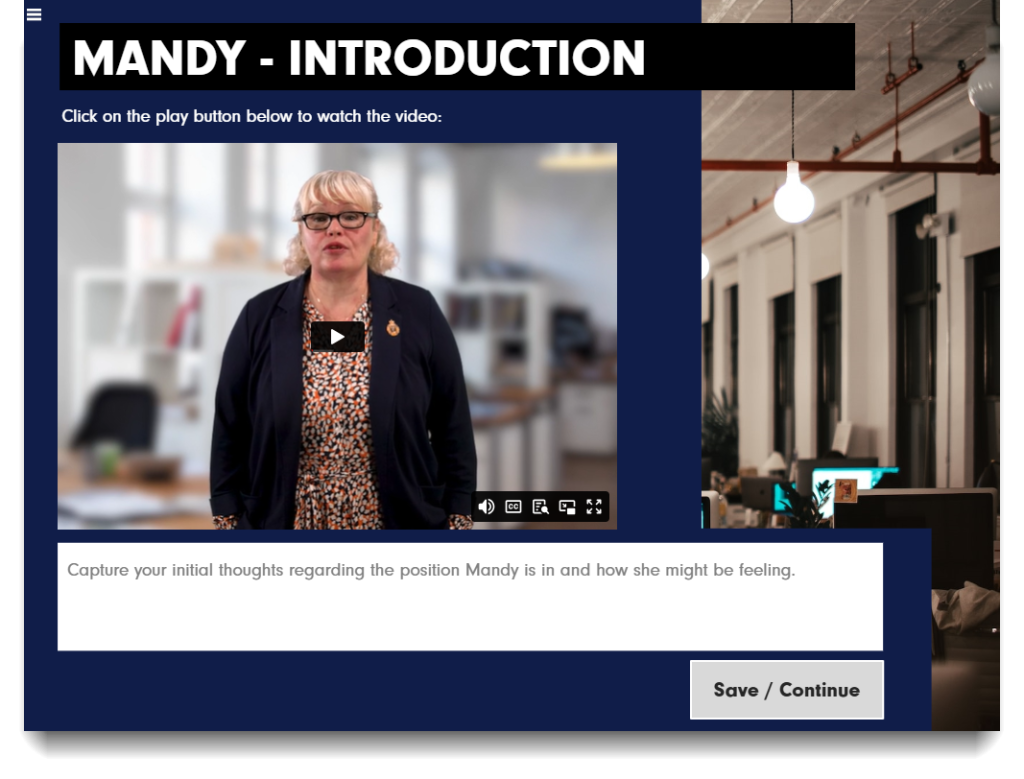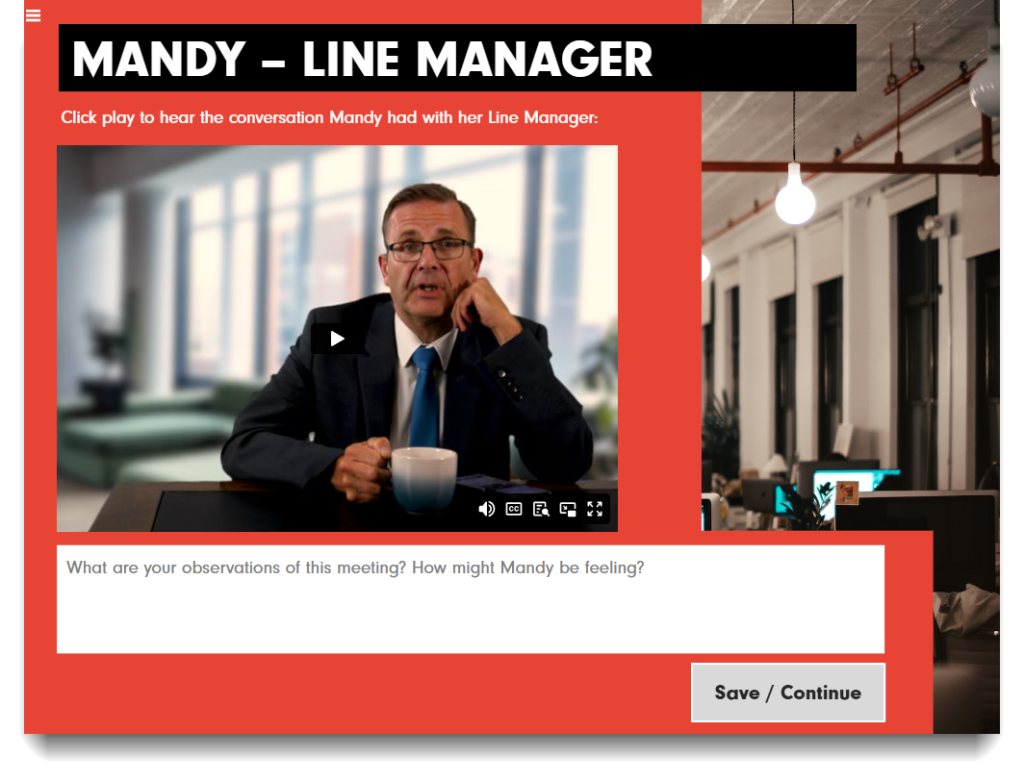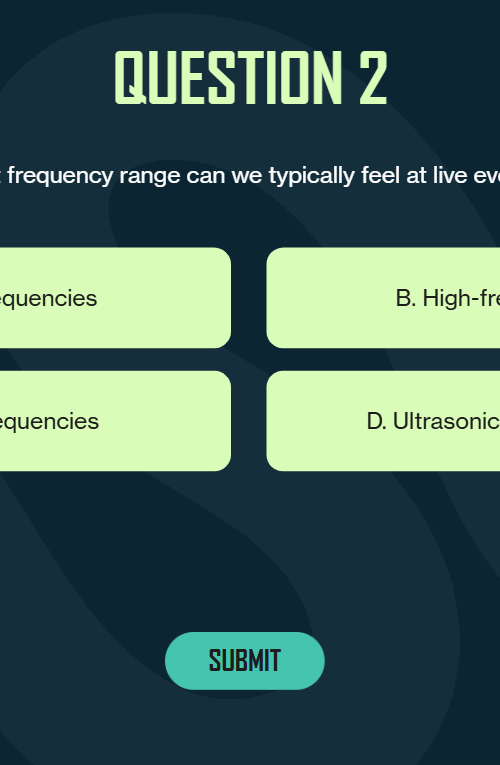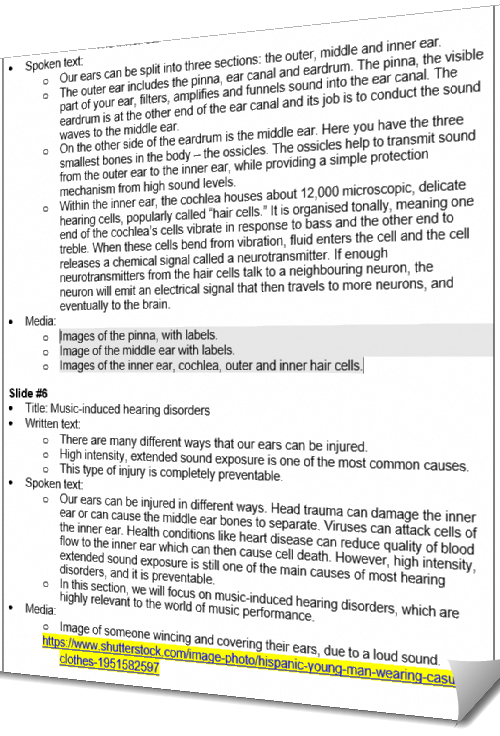
Dull? Boring? Repetitive? E-learning doesn’t need to be like that. Find out how video can enrich courses and engage learners, through tried-and-tested storytelling techniques.

TL;DR
Using video in e-learning enhances engagement, clarifies complex concepts, and improves retention. It personalises learning, appeals to diverse learning styles, and brings real-world scenarios to life, adding hugely to the overall learner experience. (Caveat: if done right!)

Dan Lamoon

Dan Lamoon is the Founder and Chief Storyteller at Colab Creation, who have been Marked Improvement’s video production partners for the last 4 years.
The days of paper-based learning and assessments have been replaced with online courses and presentations. But despite how exciting this may be, many online learning platforms fall into the trap of creating content that is uninspiring and difficult to engage with.
E-learning doesn’t have to be dull, despite its reputation. It’s time to say goodbye to boring, bland slides and text-heavy content you just want to skip through as soon as possible. Instead, say hello to dynamic, immersive and engaging online learning thanks to the art of video storytelling.
This article will dive into how video storytelling can transform your online content from mere information delivery to an inspiring, learner-led journey. We’ll explore the emotional impact of stories, the benefits of putting learners in the driving seat, and practical tips on how to make your courses more compelling, human and effective.
Ready to see how video storytelling can make your content shine? Then read on.
Why should you turn your slides into stories?
We’ve all been there: clicking through endless slides, not really paying attention and wanting to get your learning done before moving on to the next thing on your endless to-do list.
Online learning not only needs to be engaging, but also needs to make learners actually feel something. That’s where video storytelling comes in. With the use of captivating, colourful visuals blended with real life people and stories, you can bring your lessons to life and create a sense of connection with your audience.
Think of each piece of online learning content as a chapter in your story. This invites learners into a narrative that will make them feel part of the journey.
The importance of creating learning that hits home
We are all natural storytellers. Stories teach us, inspire us and make us feel emotions. When it comes to online learning, storytelling can do the same.
Think about the difference between reading a case study versus watching a video that says exactly the same thing. Through video, you can build an emotional connection that no amount of text will ever do.
Incorporating personal or emotive stories into video content can elevate the learning experience. Whether it’s a short documentary showcasing real-life scenarios such as Neurodiversity Pathways or animated narratives depicting problem-solving, storytelling helps learners see beyond the facts, finding relevance and motivation in their own learning journey.
Ditch the dry facts. Try to include real-world examples and personal stories through video to engage with your audience. When learners see themselves in the narrative, it can make their online learning experience more meaningful and memorable.
Here’s an example from a course Colab and Marked Improvement worked on for the fantastic Work Health Hub from the University of Derby. Leading Wellbeing in the Workplace is a 10-module course available to all subscribers to the Work Health Hub, and is aimed at anyone in a role where they may need to support the mental health of their colleagues. The scenario shown in the screenshots below features Mandy, who is experiencing symptoms of the menopause, and her line manager Brian, who initially fails to understand why a previously diligent member of his team is now struggling at work.


In this sequence, the learner is encouraged implicitly to see both perspectives and to empathise, even if ultimately it is Brian who needs to change his behaviour. The message is much more powerful for being conveyed in this way rather than through text.
Learner led stories + videos = audience empowerment
Nobody really likes being told what to do. One of the powerful aspects of video storytelling is the ability to hand the reins over to the learners.
Interactive videos can really give power to your learners where they can explore different paths and outcomes to their actions. It’s a great way to teach decision-making skills and also keep them hooked on the story.
For more on this, take a look at our previous blog post on Top 10 ways to use video in e-learning.
Creating online learning that is more than just a screen
It’s natural for us to feel disconnected from learning when we are just looking at a screen and not interacting with our peers. It can also feel a bit isolating. But video storytelling can give your online learning a much-needed human touch.
Watching videos with real people, real voices and genuine emotions can make you feel less alone. Also, by including diverse voices and perspectives, you can enhance your learning experience by making it more inclusive and provide a richer view of the world.
It can be as simple as the instructors and experts introducing themselves on camera, as well as sharing their stories and struggles. It will make your content feel relatable and keep people coming back for more.
So, here’s what we think… The future of online learning isn’t just about throwing lots of information at learners, hoping it will stick with them. It’s about creating stories that inspire, motivate and transform.
If you want to take your online learning to the next level, start thinking like a visual storyteller. Think about what journey you want to create for your learners, who would be the best people to tell that story and, finally, how will you connect with your viewers.
Video storytelling isn’t just a trend; it’s a revolution in how we learn. Ready to start telling your story?
 Enriching online learning through the art of video storytelling
Enriching online learning through the art of video storytelling
Enriching online learning through the art of video storytelling
 Getting into the right mindset for supporting people at work
Getting into the right mindset for supporting people at work
Getting into the right mindset for supporting people at work
 Language Matters: The Impact of Language Barriers on Employee Wellbeing
Language Matters: The Impact of Language Barriers on Employee Wellbeing
Language Matters: The Impact of Language Barriers on Employee Wellbeing
 Top 10 ways to use video in e-learning
Top 10 ways to use video in e-learning
Top 10 ways to use video in e-learning
 Designing effective Multiple Choice Questions
Designing effective Multiple Choice Questions
Designing effective Multiple Choice Questions
 What is storyboarding?
What is storyboarding?
What is storyboarding?
 Addressing the management skills gap
Addressing the management skills gap
Addressing the management skills gap
 E-learning pass marks – how good is good enough?
E-learning pass marks – how good is good enough?
E-learning pass marks – how good is good enough?
 How not to do tech support
How not to do tech support
How not to do tech support

Got you thinking?
Great! That was the idea.
If you’d like to follow up – even if it’s just to tell us why you disagree! – we’d love to have a Zoom chat over a coffee.



